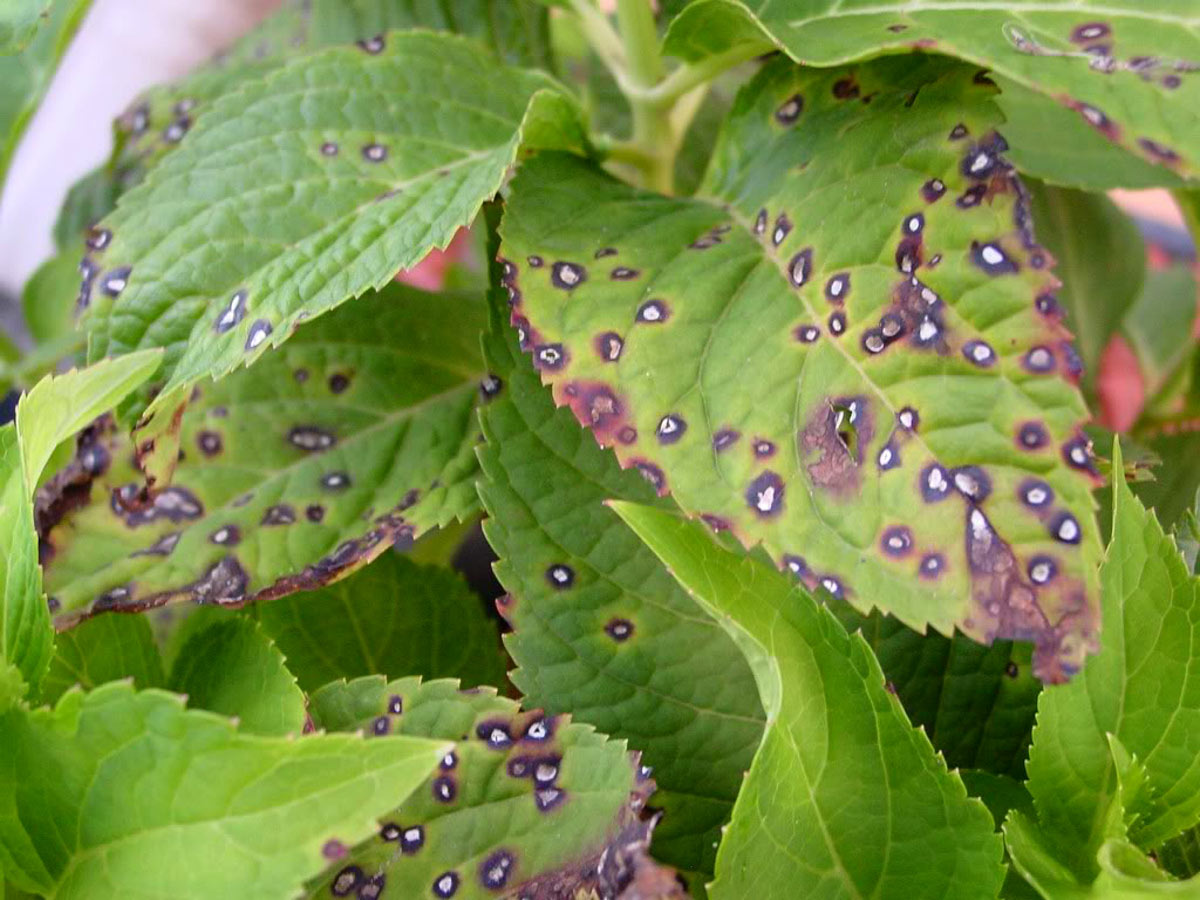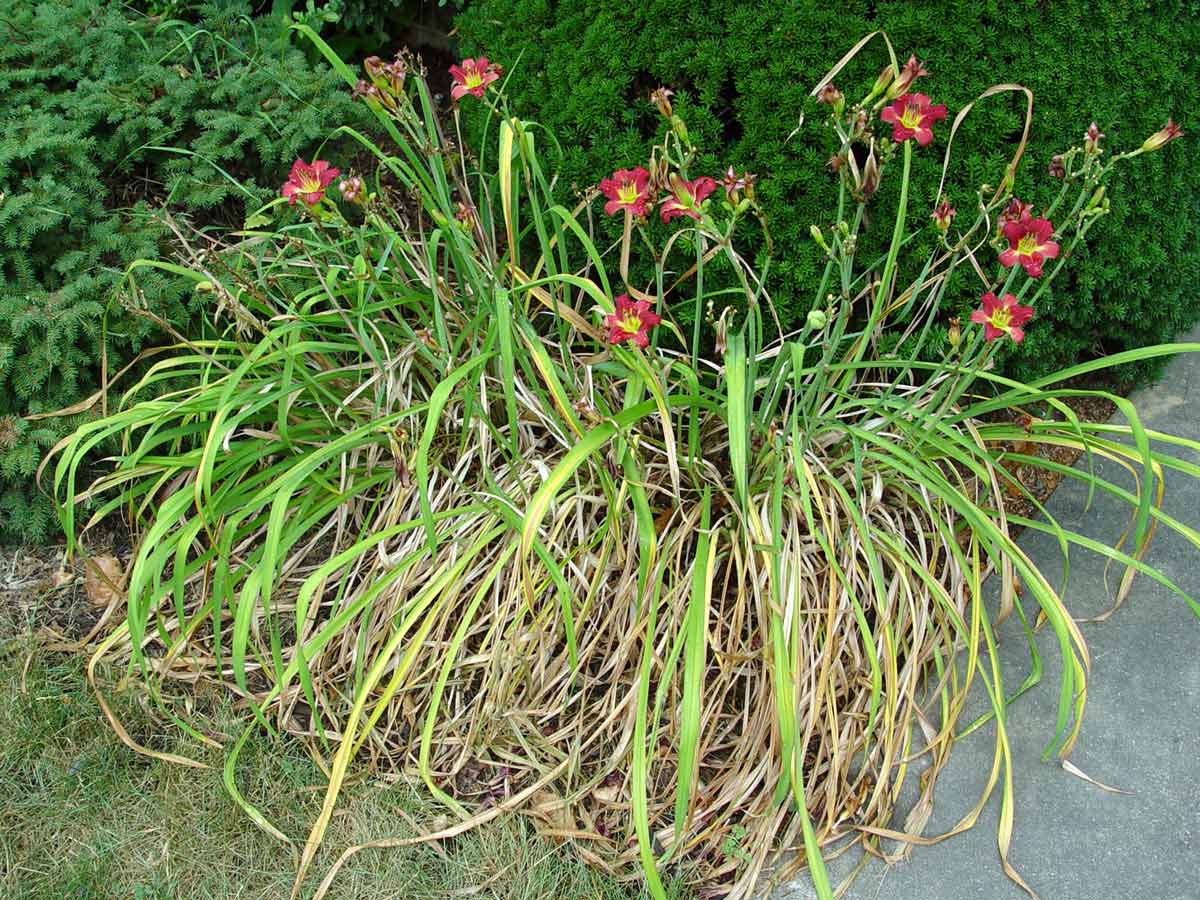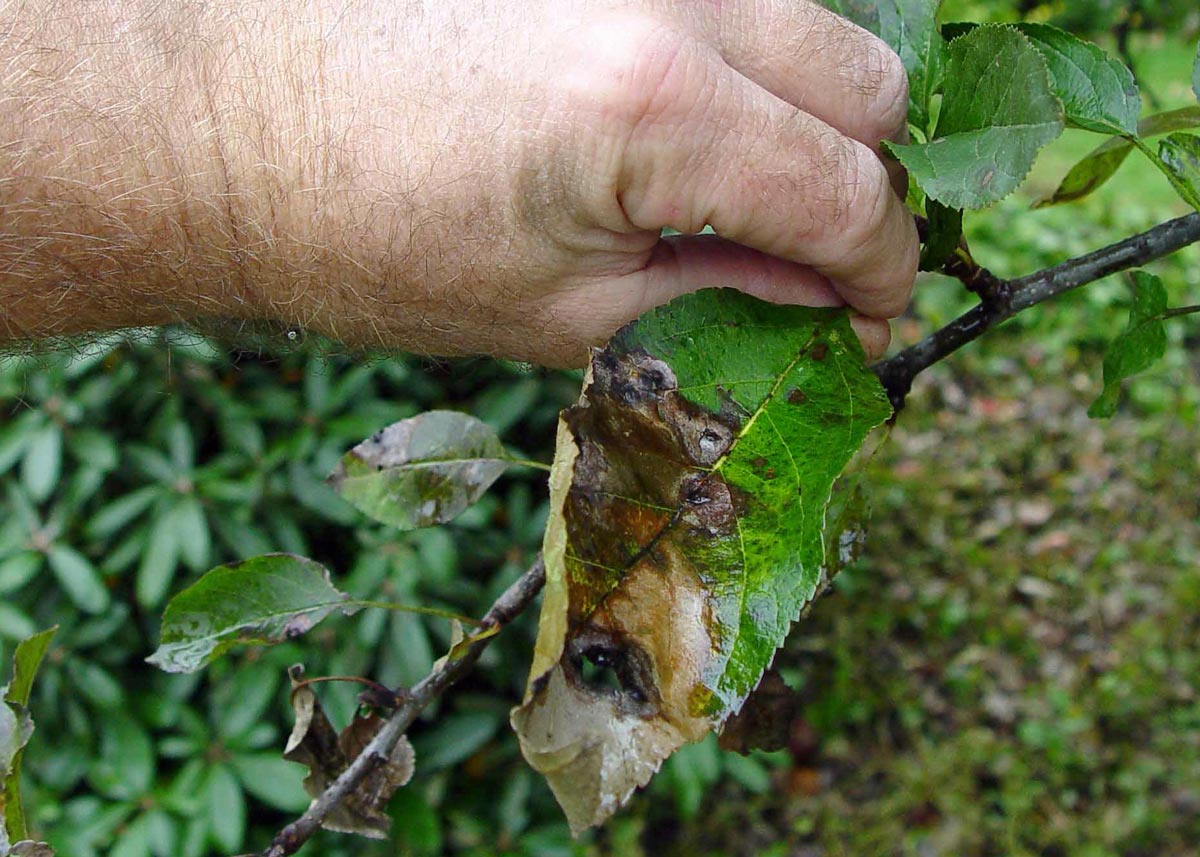What Happens to the Garden When You Get Too Much Rain?
Gardens need rain, but too much rainfall can cross the line. Learn what to do when excessive downpours or extended periods of wetness harm garden and landscape plants.
Summer is a time when plant-fueling sunlight is at its peak in the Northern Hemisphere, but it also sometimes turns out to be the “season of diseasin’.”
That’s because warm, humid conditions are perfect for fueling another kind of growth – that of assorted bacteria, fungi, and viruses that cause plant disease.
A range of diseases can strike plants in summer.
Powdery mildew is a common fungal disease that causes a white powdery growth on woody plants such as lilacs, dogwoods, and crape myrtles and such flowers as bee balm, phlox, peonies, and zinnias.

Hydrangeas often develop this fungal leaf-spot disease in summer. Photo by George Weigel.
Leaf spot is a family of diseases caused by assorted pathogens that produce dark spots on leaves and premature leaf drop. Sycamore and dogwood trees are prone to leaf spot, so are hydrangeas and roses, and tomatoes and cucumbers are common vegetable victims.
Daylilies often turn brown by mid-summer from a disease called leaf streak, and boxwoods in some regions face a potentially deadly blight disease.
Even lawns can turn brown or die in patches from summer diseases such as dollar spot, summer patch, and rust.
The good news is that most plant diseases are cosmetic and temporary. They typically don’t kill plants.
Most diseases are also plant-specific. Just because a disease strikes one plant doesn’t mean it’s going to spread throughout the whole yard.

While this leaf-streak disease on a daylily plant might look bad, plants almost always bounce back from it with no noticeable harm. Photo by George Weigel.
The down side of plant diseases is that they can ruin the look of ornamentals, short-circuit the production of vegetables, and stunt growth in general.
Before taking any action, though, it’s important to sort out whether your plant really is diseased or suffering from some other problem, such as bugs, weather extremes, or poor soil.
The signs and symptoms of damage are key to diagnosing.
Phone apps and plant-diagnostic websites are two resources that can help you narrow down a problem.
County Extension offices and their teams of Master Gardeners are also invaluable resources of free diagnostic help.
“What’s Wrong with My Plants?” by David Deardorff and Kathryn Wadsworth (Timber Press, 2009) is an excellent book that features sketches, photos, and an elaborate but easy-to-use key system to analyze various problems.
Garden-center personnel are also often schooled on diseases. And to really nail down an accurate diagnosis, most land-grant universities have plant disease clinics that will evaluate diseased-plant samples sent in by residents.

Picking off and removing diseased leaves might be enough to head off disease outbreaks. Photo by George Weigel
Once you’re sure your plant is diseased, the first question is determining whether action is needed. If the disease is only cosmetic and temporary, you may be able to ignore it or take light action, such as picking off diseased leaves or thinning out overly dense growth to improve air flow.
If the disease is bad enough to warrant tougher action, it’s not as easy as buying a fungicide and spraying away.
For one thing, spray ingredients target some diseases better than others. In other words, not all sprays are effective against all diseases. It’s best to know the disease, then look for a spray that’s labeled for control of that disease.
Second, fungicide sprays work more as preventatives than disease-killers. They can’t undo damage that’s already happened. Rather, they protect uninfected leaves from infection.
That means timing is important. The Catch-22 is that if you wait too long, the spray won’t be of much use, but if you spray “just in case,” you could be wasting product on a problem that wasn’t a problem.
Short of spraying, several cultural steps can help mitigate disease. Besides picking diseased leaves and thinning dense growth:
Again, check with local Extension offices, Master Gardeners, and garden-center personnel for recommendations on disease-resistant varieties at buying time, or at least scan the catalogs and plant labels for mention of disease-resistant traits.
Many books, plant associations, and public gardens also run trial programs to help gardeners zero in on the best plants. Examples are the All-America Selections program, the Perennial Plant of the Year program, and trial programs run by the Chicago Botanical Garden and the Mt. Cuba Center in Delaware.